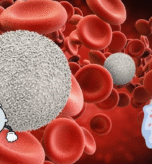Beauty traditions from around the world are as diverse as the cultures they come from. From intricate henna designs to elaborate scarification rituals, each tradition offers a unique glimpse into the values and aesthetics of its respective culture. Let’s take a journey around the globe to explore some of the most fascinating beauty traditions.
1. Henna Night (Middle East and South Asia)
In many Middle Eastern and South Asian cultures, henna is an integral part of wedding celebrations. The night before the wedding, the bride’s hands and feet are intricately decorated with henna designs, symbolizing good luck and happiness. The darker the henna stain, the stronger the marriage is believed to be.
2. Scarification (Africa)
In some African cultures, scarification is a rite of passage that signifies strength, beauty, and cultural identity. The scars are created using a razor or thorn, and the process is often painful and ritualistic. The scars can be decorative, symbolic, or a combination of both.
3. Geisha Makeup (Japan)
In traditional Japanese culture, geishas are renowned for their stunning makeup. The iconic white face paint, red lips, and black eyebrows are applied using natural ingredients like rice powder and beeswax. The makeup is a symbol of elegance and refinement.
4. Lip Plates (Mursi People, Ethiopia)
The Mursi people of Ethiopia are known for their lip plates, which are considered a symbol of beauty and strength. Young girls wear wooden or clay plates in their lower lips, which are gradually increased in size as they grow older. The plates can be up to 6 inches in diameter.
5. Foot Binding (China)
Foot binding was a painful and debilitating practice that lasted for centuries in China. Young girls’ feet were bound to prevent them from growing, with the goal of creating tiny, delicate feet. The practice was seen as a symbol of beauty and femininity.
6. Mehndi Ceremony (India)
Similar to the henna night, the mehndi ceremony is an integral part of Indian weddings. The bride’s hands and feet are decorated with intricate henna designs, which are believed to bring good luck and happiness.
7. Tattoos (Maori, New Zealand)
In Maori culture, tattoos are a symbol of status, spirituality, and identity. The intricate designs are created using traditional techniques and tools, and are often worn on the face, arms, and legs.
8. Hair Braiding (Africa)
Hair braiding is an art form in many African cultures, with intricate designs and patterns that signify status, age, and cultural identity. The braids can be decorative, symbolic, or a combination of both.
9. Skin Whitening (Southeast Asia)
In some Southeast Asian cultures, skin whitening is a popular beauty trend. Many people use skin-lightening products to achieve a fairer complexion, which is often associated with beauty and status.
10. Black Kohl (Middle East and North Africa)
The use of black kohl eyeliner is a beauty tradition that dates back thousands of years in the Middle East and North Africa. The eyeliner is believed to have antibacterial properties and is often applied to protect the eyes from the sun.
These beauty traditions showcase the diversity and creativity of cultures around the world. Each tradition offers a unique perspective on beauty, identity, and cultural heritage. Whether it’s intricate henna designs or elaborate scarification rituals, each tradition is a testament to the power of beauty and self-expression.
Meta AI response: Beauty traditions from around the world are as diverse as the cultures they come from. From intricate henna designs to elaborate scarification rituals, each tradition offers a unique glimpse into the values and aesthetics of its respective culture. Let’s take a journey around the globe to explore some of the most fascinating beauty traditions. 1. Henna Night (Middle East and South Asia) In many Middle Eastern and South Asian cultures, henna is an integral part of wedding celebrations. The night before the wedding, the bride’s hands and feet are intricately decorated with henna designs, symbolizing good luck and happiness. The darker the henna stain, the stronger the marriage is believed to be. 2. Scarification (Africa) In some African cultures, scarification is a rite of passage that signifies strength, beauty, and cultural identity. The scars are created using a razor or thorn, and the process is often painful and ritualistic. The scars can be decorative, symbolic, or a combination of both. 3. Geisha Makeup (Japan) In traditional Japanese culture, geishas are renowned for their stunning makeup. The iconic white face paint, red lips, and black eyebrows are applied using natural ingredients like rice powder and beeswax. The makeup is a symbol of elegance and refinement. 4. Lip Plates (Mursi People, Ethiopia) The Mursi people of Ethiopia are known for their lip plates, which are considered a symbol of beauty and strength. Young girls wear wooden or clay plates in their lower lips, which are gradually increased in size as they grow older. The plates can be up to 6 inches in diameter. 5. Foot Binding (China) Foot binding was a painful and debilitating practice that lasted for centuries in China. Young girls’ feet were bound to prevent them from growing, with the goal of creating tiny, delicate feet. The practice was seen as a symbol of beauty and femininity. 6. Mehndi Ceremony (India) Similar to the henna night, the mehndi ceremony is an integral part of Indian weddings. The bride’s hands and feet are decorated with intricate henna designs, which are believed to bring good luck and happiness. 7. Tattoos (Maori, New Zealand) In Maori culture, tattoos are a symbol of status, spirituality, and identity. The intricate designs are created using traditional techniques and tools, and are often worn on the face, arms, and legs. 8. Hair Braiding (Africa) Hair braiding is an art form in many African cultures, with intricate designs and patterns that signify status, age, and cultural identity. The braids can be decorative, symbolic, or a combination of both. 9. Skin Whitening (Southeast Asia) In some Southeast Asian cultures, skin whitening is a popular beauty trend. Many people use skin-lightening products to achieve a fairer complexion, which is often associated with beauty and status. 10. Black Kohl (Middle East and North Africa) The use of black kohl eyeliner is a beauty tradition that dates back thousands of years in the Middle East and North Africa. The eyeliner is believed to have antibacterial properties and is often applied to protect the eyes from the sun. These beauty traditions showcase the diversity and creativity of cultures around the world. Each tradition offers a unique perspective on beauty, identity, and cultural heritage. Whether it’s intricate henna designs or elaborate scarification rituals, each tradition is a testament to the power of beauty and self-expression.



